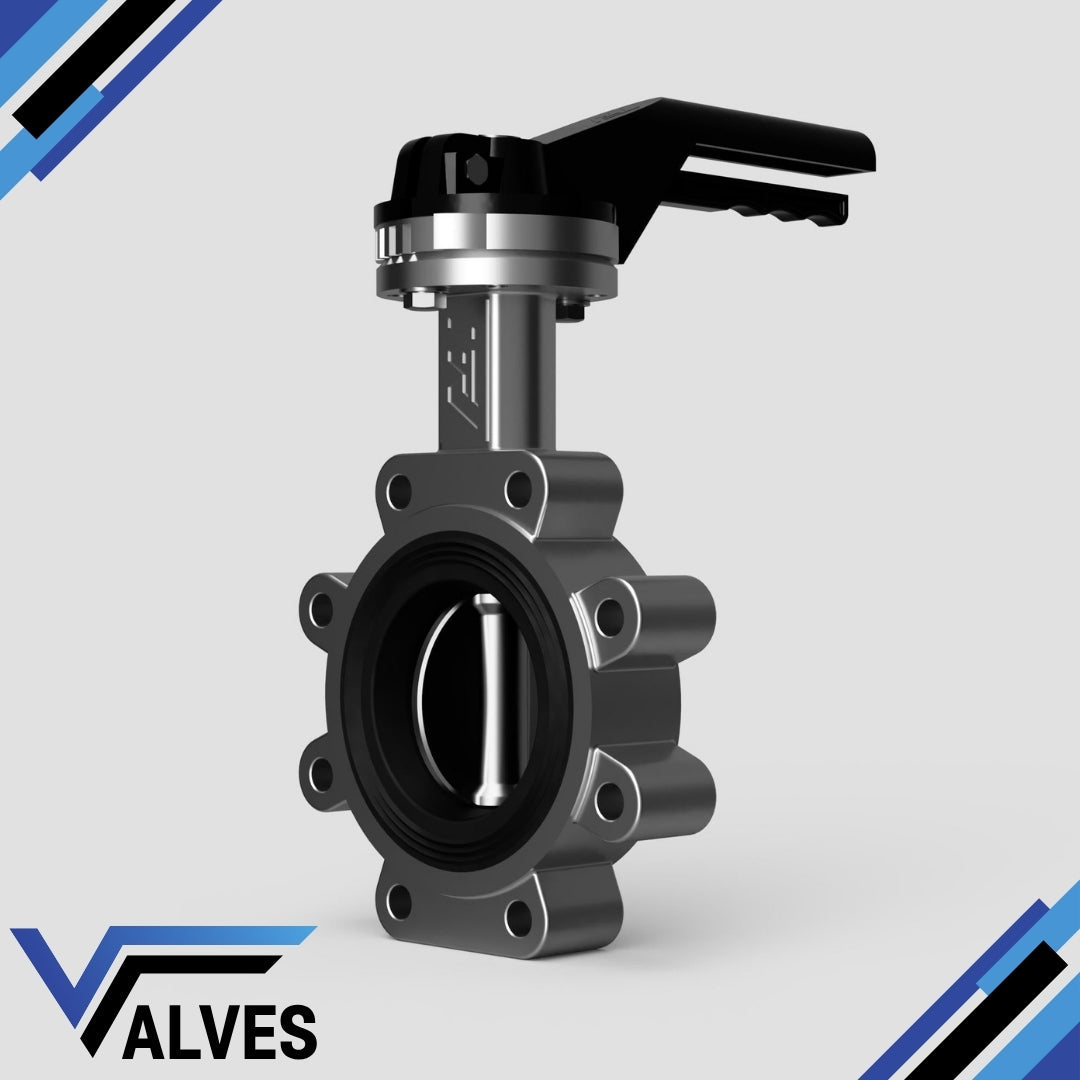Valves UK
TTV Stainless Steel Lugged Butterfly Valve - EPDM Seat
TTV Stainless Steel Lugged Butterfly Valve - EPDM Seat
Couldn't load pickup availability
The TTV Stainless Steel Lugged Butterfly Valve with EPDM Seat is a premium, high-performance valve engineered for a wide range of industrial applications. Designed to provide superior durability, reliable sealing, and easy operation, this valve is ideal for controlling the flow of liquids, gases, and slurries in both high-pressure and low-pressure environments.
Key Features:
Material: Constructed from high-quality stainless steel, this valve offers exceptional resistance to corrosion, making it suitable for use in harsh environments, including those involving chemicals and aggressive media.
Lugged Design: The lugged body design allows for easy installation and removal from the pipeline, even when the system is pressurized. This feature provides added safety and flexibility during maintenance operations.
EPDM Seat: Equipped with an EPDM (Ethylene Propylene Diene Monomer) seat, this valve ensures a tight, bubble-free seal, preventing leakage and enhancing efficiency. The EPDM material is known for its excellent resistance to water, steam, and a wide range of chemicals, making it ideal for various industrial processes.
Operation: The valve's handle or actuator allows for precise control of the flow, with a smooth and consistent operation that minimizes wear and tear, extending the lifespan of the valve.
Versatility: Suitable for a wide range of applications, including water treatment, chemical processing, HVAC systems, and food and beverage production. The valve is compatible with various fluids, including water, air, and non-aggressive chemicals.
Size Range: Available in multiple sizes to accommodate different pipe diameters, ensuring a perfect fit for your specific needs.
Pressure Rating: Designed to withstand high-pressure applications, ensuring reliable performance under demanding conditions.
Applications:
Water and wastewater treatment plants
Chemical and petrochemical industries
Food and beverage processing
Pharmaceutical production
HVAC systems
Marine and shipbuilding industries
Technical Specifications:
Body Material: Stainless Steel (Grade 304/316)
Seat Material: EPDM
Connection Type: Lugged
Pressure Rating: ANSI 150/PN16
Temperature Range: -10°C to +120°C (14°F to 248°F)
Size Range: DN50 to DN600 (2" to 24")
End Connection: Flanged
Actuation: Manual, Pneumatic, or Electric
Benefits:
Durable and long-lasting with low maintenance requirements
Excellent corrosion resistance for use in harsh environments
Easy installation and maintenance due to the lugged design
Reliable, leak-free performance with the EPDM seat
Versatile for a wide range of industrial applications
Conclusion: The TTV Stainless Steel Lugged Butterfly Valve with EPDM Seat is a robust and reliable solution for controlling fluid flow in various industrial applications. With its durable construction, precise operation, and exceptional sealing capabilities, this valve is an excellent choice for industries requiring dependable and efficient fluid management.
Share

FAQ's
What is the difference between a valve and an actuator?
What types of actuators are available?
The main types of actuators are:
Pneumatic actuators – use compressed air for fast, reliable operation.
Electric actuators – use electrical power for precise control.
Hydraulic actuators – use fluid pressure for high-torque applications.
Each type offers unique advantages depending on the environment, media, and system control needs.
How do I choose the right actuator for my valve?
To select the correct actuator, consider:
Valve type and torque requirement
Power source available (air, electric, or hydraulic)
Operating environment (temperature, humidity, hazardous area)
Control signal type (on/off or modulating)
Matching actuator torque and compatibility with the valve’s ISO mounting ensures reliable performance.
What are the main types of valves used in automation?
The most common valves in automated systems include:
Ball valves – for tight shutoff and quick operation.
Butterfly valves – for larger flow control with compact design.
Globe valves – for precise throttling and flow regulation.
Check valves – to prevent backflow.
Gate valves – for full bore flow isolation.
What’s the difference between a double-acting and spring-return actuator?
Double-acting actuators use air (or power) to both open and close the valve.
Spring-return actuators use air to open (or close) the valve, and a built-in spring to automatically return it to a safe position when power or air is lost — ideal for fail-safe operation.
How often should valves and actuators be serviced?
Regular maintenance intervals depend on operating conditions, but a good rule of thumb is to inspect every 6–12 months.
This includes checking for leaks, lubrication, seal wear, and actuator responsiveness to prevent unexpected downtime.

